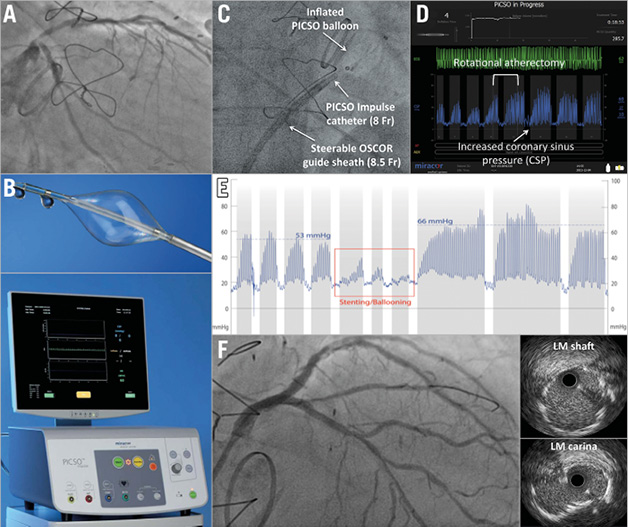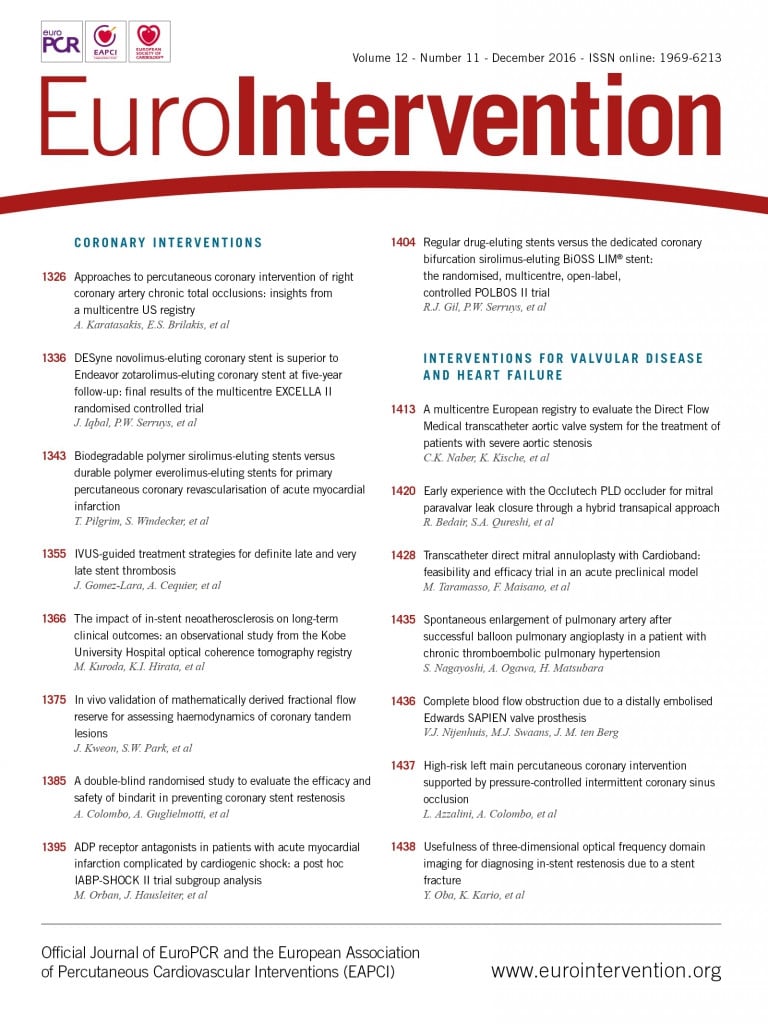

Pressure-controlled intermittent coronary sinus occlusion (PICSO) improves microvascular perfusion in ischaemic areas of the myocardium by intermittently increasing wedge pressure, using a balloon-tipped catheter introduced into the coronary sinus (CS). No experience exists using PICSO to relieve myocardial ischaemia during PCI.
A 75-year-old man with severe left ventricular dysfunction (ejection fraction 25%) and prior mechanical aortic valve replacement presented with heart failure. Critical calcified distal left main (LM) stenosis (Medina 1,1,1) (Panel A) was diagnosed. As coronary bypass surgery was deemed too risky (EuroSCORE 32%), LM PCI under mechanical support was chosen. Severe peripheral vascular disease and mechanical aortic valve prosthesis contraindicated intra-aortic balloon-pump and Impella® (Abiomed, Danvers, MA, USA) use. Therefore, the PICSO® Impulse System (Miracor Medical Systems, Vienna, Austria) (Panel B) was used. The PICSO balloon was delivered into the CS through the right femoral vein, and was left in place (intermittently occluding the CS) throughout the procedure (Panel C). Rotational atherectomy on the LM-circumflex and culotte stenting with two drug-eluting stents were performed. PICSO activity increased during and immediately after rotational atherectomy, thus leading to increased CS pressure (Panel D). CS pressure (a surrogate of coronary flow) improved after stenting (Panel E). The final result was optimal (Panel F). The patient remained stable throughout the procedure and no complication occurred. PICSO quantity was 816 mmHg (values >800 mmHg have been associated with increased myocardial salvage in primary PCI). Peak troponin T was 144 ng/l (normal values: <14 ng/l). The hospital stay was uneventful. This case suggests the feasibility and safety of PICSO as microcirculatory support during high-risk PCI.
Conflict of interest statement
A. Colombo serves as a member of the scientific advisory council of Miracor Medical Systems. The other authors have no conflicts of interest to declare.

